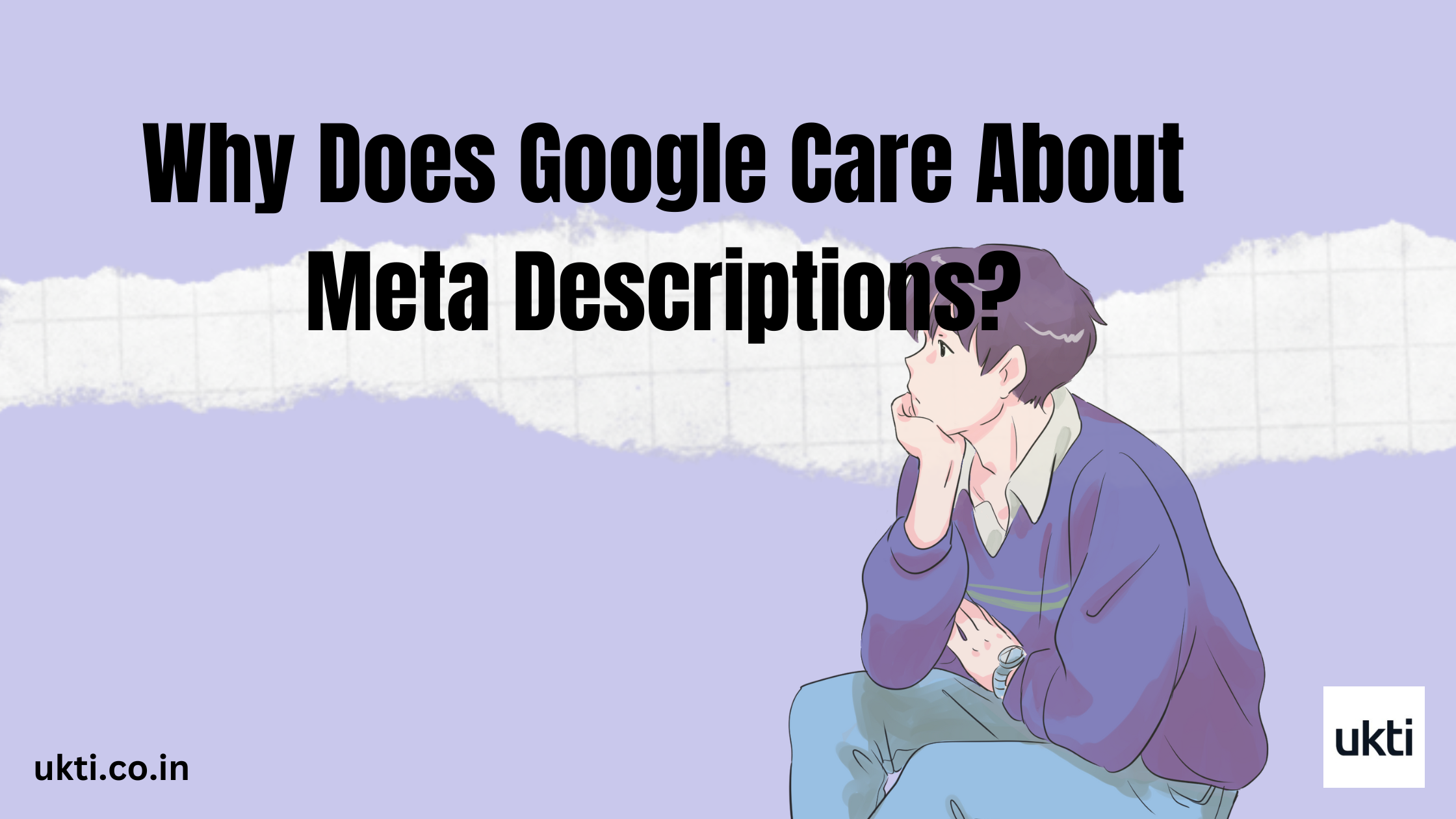Before clicking on a search page result, wouldn’t it be great if you could see what you were heading into? Like a succinct summary of the content to tell you exactly what you’ll be reading about. A meta description is all about that.
Search engines such as Google, Yahoo, and Bing use spider-like bots called web crawlers to index the content of websites.
All the information collected by these bots is used to match your pages to the keywords entered by the user. But crawlers cannot automatically understand what your page is about.
They need a little nudge from you in the form of meta descriptions. Why? Let’s understand using Google as an example.
What is a Meta Description?
When you type a query into Google, you are rewarded with top results. And below each result is a short paragraph describing the content of the specific webpage. That’s called a meta description.
Here’s what a meta description looks like. This is for our blog Using ChatGPT for SEO & Content? Beware of the AI Watermark.

The goal behind a meta description is to inform the reader of what content they can expect from the page and help them decide whether they should visit it or not. This is another way of differentiating and putting out better content for your audience.
But what happens when you don’t provide a meta description?
Are Meta Descriptions Necessary?
Ideally, you should provide a meta description for every content you publish online. But in case you don’t, Google’s web crawler will pull content directly from your page and make one for you. But the caveat here is: such a meta description tag will be generic and may not be optimized for your intended audience.
Other than the lack of optimization, it can even mislead the user regarding the content on your page. And that’s something to be worried about!
Neil Patel finds that websites that curate their own meta descriptions witness a 5.8% higher CTR than those allowing Google to make them for them.
Is Meta Description Important for SEO?
Search engine optimization is the name of the game. If you want your content to shine, it’s got to be designed to impress Google as well as your target audience. But is meta description important for SEO? The answer to this question is slightly tricky.
Google’s John Muller has gone on record to say meta descriptions are not a ranking factor for the search engine. But that doesn’t mean they can’t influence your SERP ranking.
Meta descriptions are essentially summaries of your webpage. And these summaries help users decide whether they want to visit your page. For you, that could mean increasing your click-through rate (CTRs).
Now, while there is no clear indication if CTRs are a ranking factor – there is also no concrete evidence that they are not. The recent Google update doesn’t help answer this question either.
But what we do know is that Google monitors user behaviour. And so, higher CTRs help convince Google that your content provides value to the reader. This drives your SERP ranking. And thus, gets you more leads.
In short,
higher CTR= higher Google ranking= more leads
Further, Backlinko reports that pages with meta descriptions witness an average of 5.8% more clicks than those without one.

See the difference? So, if you want to drive your Google ranking, optimizing your meta descriptions is a great place to start.
And now, for the million-dollar question.
How to Write Good Meta Descriptions?
Here’s a quick cheat sheet to make your meta descriptions truly count.
1. Have a Different Meta Description for Each Post
Duplicating meta descriptions is a bad idea (and definitely not good for your rankings!). You might think it’s easier, but it can negatively affect Google’s perception of your content. The search engine might flag it as redundant or of poor quality.
To this end, Google Search Central even recommends leaving the meta description field blank rather than reusing the same content. To make your meta description have its intended effect, make each one innovative and unique.
2. Include Only Your Primary Keyword in the Meta Description
Your primary keyword is your fairy godmother. It can wield a wand and make things happen for you. But even the fairy godmother had a timer.
While you should ideally include your primary keyword in the meta description, don’t go stuffing the meta description. Going overboard can make Google remove your page from the SERP entirely.
The idea is to include what users are looking for. Because research finds that you can get as much as a 5.7% increase in CTR if the exact query someone is searching is in your meta description.
3. Keep Your Meta Description Between 150-160 Characters
The meta description is the trailer, and the blog is the movie. So, keep it to the point, simple, and concise. Google will likely cut off your meta description mid-way if it exceeds the 160-character limit.
Moreover, Neil Patel finds that meta descriptions between 119 and 135 characters witness roughly a 3.4% higher CTR. If your meta descriptions are shorter or longer than this given limit, you won’t get as many clicks.
4. Add a Call-to-Action
A CTA is a must for your meta description. You must encourage the user to visit your blog. Phrases such as ‘click here’, ‘read more here’, and ‘check out this post’ etc. are some CTAs you can incorporate into your meta description.
Just how we do for our Does Documenting Your Content Strategy Make a Difference? Blog.

Want to get interesting insights and industry news straight to your feed? Give us a follow on LinkedIn.
Why Care About Meta Descriptions
The famous vaudeville star Will Rogers once said,
“You never get a second chance to make a first impression.”
And this rings true with meta descriptions too. These are your blog’s first impressions to users. Half the job is done if you convince them to click on your page. After that, your content does the talking.
But getting them there is tough enough. And that’s why you must optimize your meta description. Think of these as ushers to your blog’s grand launch. Make them sharp and have them escort the user to their seat.
Just keep in mind the above four tips, and you’ve got yourself a winner.
About Author

